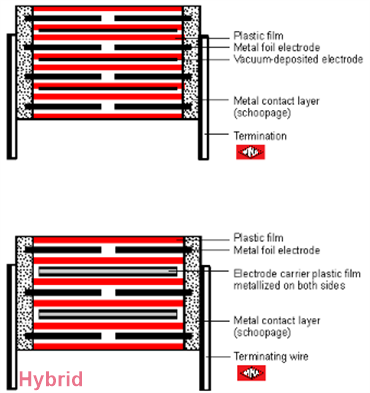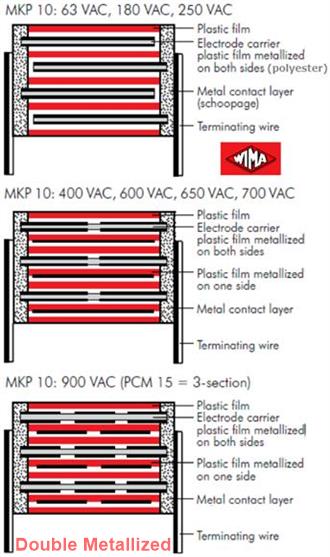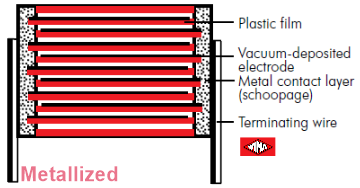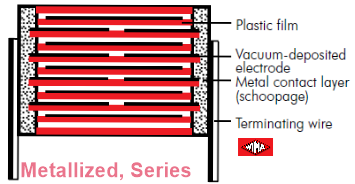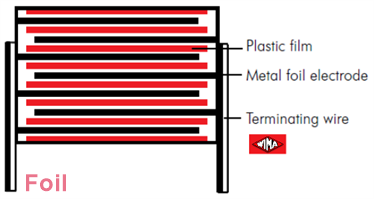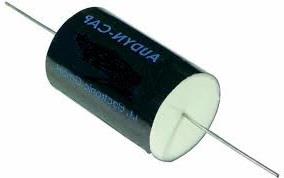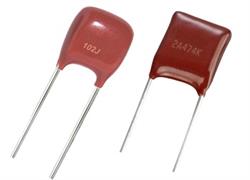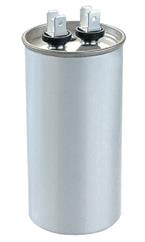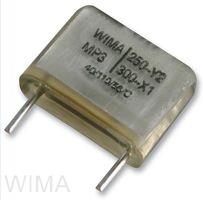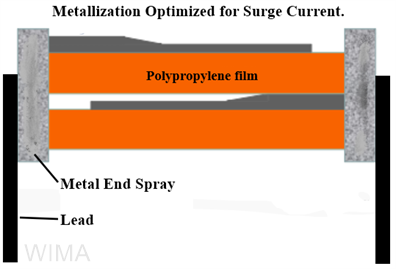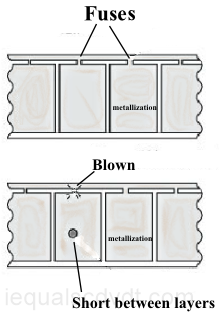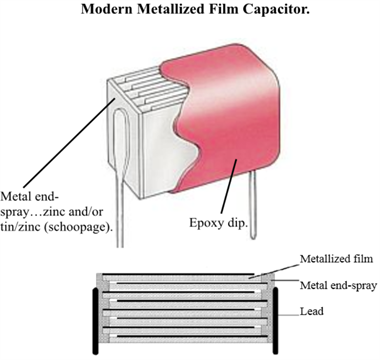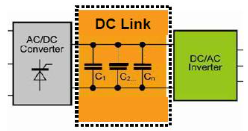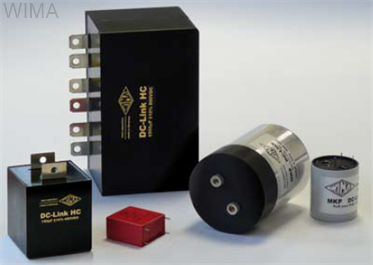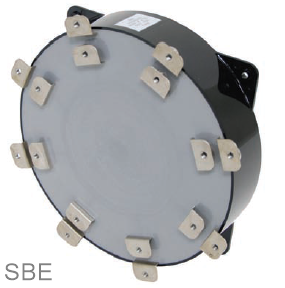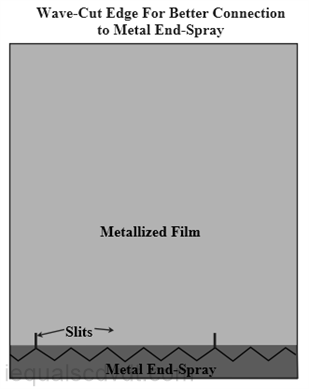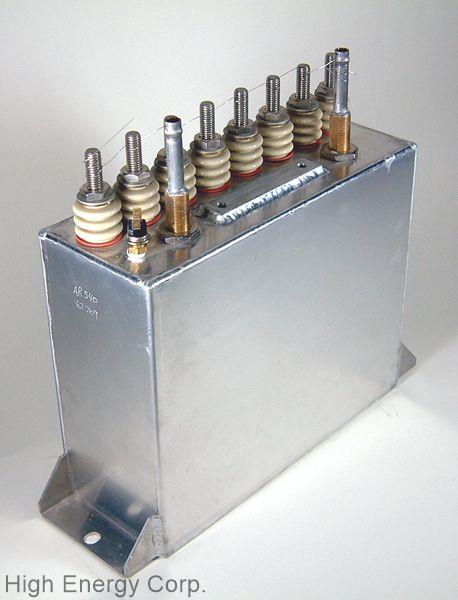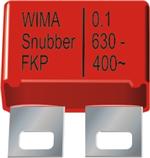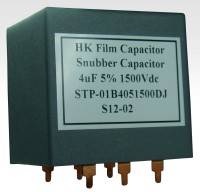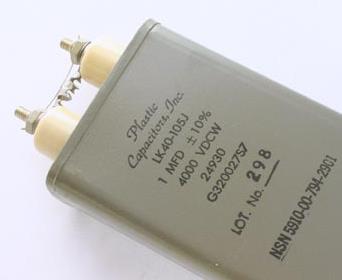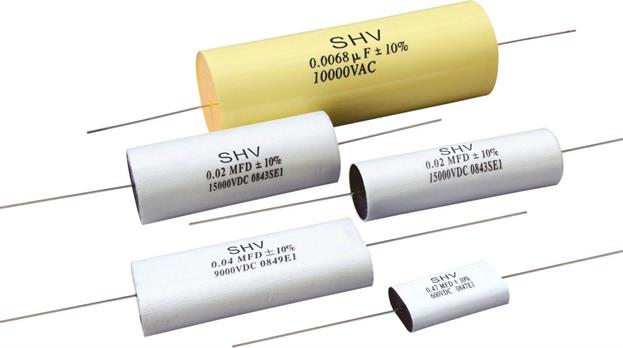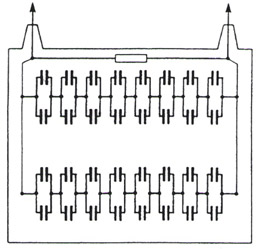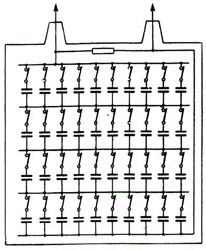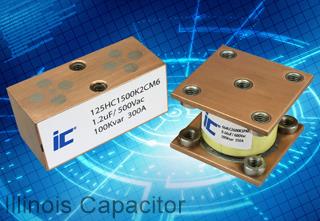Film capacitor design:
The internal design of of film capacitors is a compromise of cost and size versus voltage versus performance in various pulse
type applications.
This is a sample of types of common capacitor constructions. There are others. Very large high-voltage capacitors may be
made of a number of discrete capacitors in one box, into the dozens in some cases.
Metallized:
Usage: General purpose. Probably the most common metallized capacitor. Usually X and Y capacitors are made this
way, as well as very large capacitors that substitute for electrolytics (called DC-link). This cross section can be found in both
wound and stacked types.
Pro: Best size, lowest cost, good self-healing in many materials.
Con: Limited voltage ratings, probably no more than 1000 volts.
Metallized, series:
Usage: General purpose, higher voltage. some Y capacitors. This construction can be found in a few ceramic
capacitors as well.
Pro: Usable for higher voltages, it's like having two capacitors in series, with more sections possible for higher voltages
yet. Good self-healing. Double metallized types made for pulse applications like GTO and IGBT snubber circuits, .
Con:
Foil:
Usage: General purpose.
Pro: Lower ESR than metallized, better current handling.
Con: Limited voltage ratings in this form, does not self-heal so thicker film may be used for reliability. Foil is a more
expensive construction. Larger than metallized film. The foil is typically 0.0002" while metallization is more like 0.000,001"
Hybrid: metallized + foil:
Usage: A number of variations for various pulse applications and various voltage ratings. This includes double metallized
for better pulse performance.
Pro: Maintains good self-healing with good ESR.
Cons: Larger than metallized film.
Other features:
To improve reliability of high-voltage capacitors (but under 500 VAC for some parts) it is common to break the metallization
into segments that are connected by "fuses". If a short occurs in one segment, its fuse blows and isolates the shorted segment
from the rest of the capacitor. The picture on the right shows only one of a number of segment shapes in use. Segmenting the
metallization does reduce the capacitance a little, and increases the ESR. Over time, the capacitance will drift down as the
capacitor ages and more segments are isolated.
The shape of the capacitor is important for high-current, high frequency applications. The "Better" geometry (see below) has a
lower ESR and lower ESL and therefore, better performance, a lower temperature rise and longer life.
Metallization:
To improve the surge-current capacity of a film capacitor (and make it work more like a more expensive foil capacitor) the
metallization that bonds to the metal contact layer can to made extra thick (optimized). There are a number of variations on this
Both aluminum and zinc are used, and each has its advantages and disadvantages. Aluminum has better resistance to corrosion
while zinc self-heals better. Al-Zn alloys are also used. Another variation is to put down aluminum first and zinc over it.



